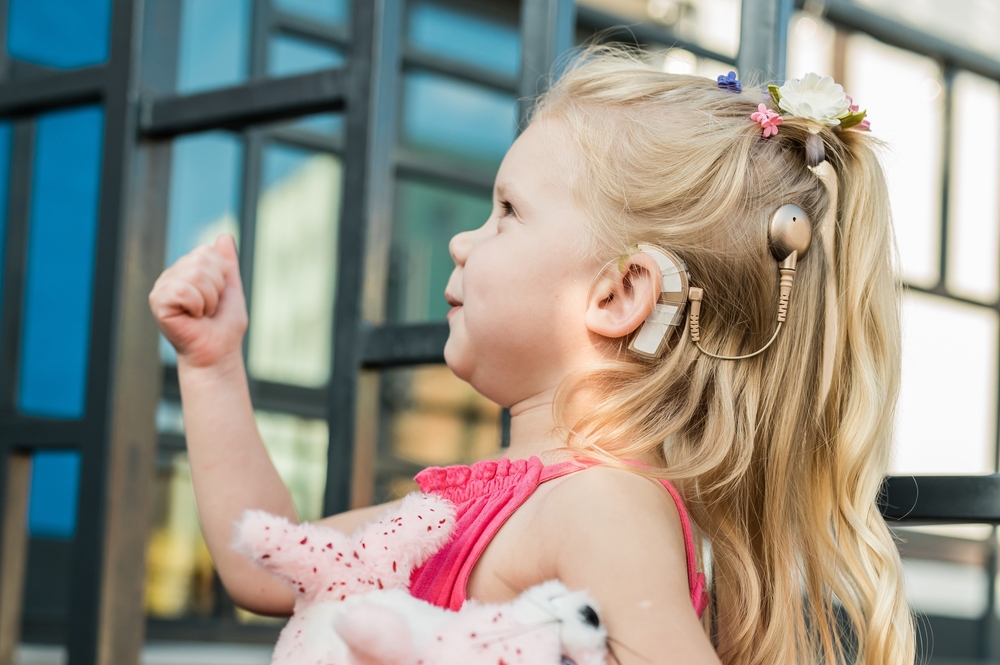 Hearing loss is more common in children than many parents realize. The Centers for Disease Control and Prevention (CDC) estimates that around 2 to 3 out of every 1,000 children in the United States are born with detectable hearing loss in one or both ears. Congenital hearing loss present at birth accounts for the majority of cases.
Hearing loss is more common in children than many parents realize. The Centers for Disease Control and Prevention (CDC) estimates that around 2 to 3 out of every 1,000 children in the United States are born with detectable hearing loss in one or both ears. Congenital hearing loss present at birth accounts for the majority of cases.
However, acquired hearing loss developing later in childhood is also an important concern that requires monitoring. Achieving early detection through screening and diligent awareness of potential signs is key, as is promptly seeking professional evaluation and intervention services should issues arise.
With the appropriate support in place, children with hearing loss can thrive developmentally and succeed both academically and socially.
Recognizing the various ways hearing loss can manifest itself in childhood is an important first step towards ensuring these kids get the help they need. Let’s take a closer look at common signs parents should watch for, how diagnostics are conducted, and the range of intervention options available based on a child’s needs. El Dorado Hearing in Tucson, Arizona is committed to supporting families through comprehensive pediatric testing, treatment, and lifelong care.
Signs of Hearing Loss in Children
Detecting hearing issues early requires knowing what behaviors could indicate a problem. Pay attention if a child does not respond to their name being called from across the room, even in relatively quiet environments. Delayed speech and language milestones are also a red flag, as are frequent requests for repetition during conversations. Some children may turn up the volume excessively when watching videos or playing on devices.
Complaints of ear pain, ringing, or other sensations could reflect underlying medical issues affecting hearing. Behavioral or focus problems at school may arise if a learning disability is not addressed.
While no single sign confirms hearing loss on its own, if you notice multiple concerns, it is best to consult a pediatric audiologist. The sooner testing is performed, the earlier management strategies can start helping a child catch up developmentally versus falling behind peers. Early intervention programs yield the greatest benefit.
Diagnosing Hearing Loss in Children
Making an official diagnosis involves a multi-step medical workup. All newborns are screened for hearing before hospital discharge through the newborn hearing screening. This aims to discover any congenital hearing conditions present from birth. Should a screening result require follow-up or later challenges emerge, comprehensive hearing evaluations are conducted.
The main diagnostic tests include:
- Auditory Brainstem Response (ABR) testing: Measures the brain waves elicited by sound to pinpoint possible problems in the pathway from ear to brain.
- Otoacoustic Emissions (OAE) testing: Checks the function of the inner ear by detecting vibrations produced in response to sound stimulation.
- Behavioral audiometry: Assesses a child’s ability to detect and identify sounds across frequencies and volumes while observing their responses like turning their head.
Further medical tests such as imaging of the inner ear and genetic screening may provide insight into underlying anatomical or genetic causes affecting hearing. This informs treatment recommendations.
Interventions for Childhood Hearing Loss
Management is tailored based on the type and severity of each child’s condition. Mild to moderate loss may benefit from hearing aids, which amplify sound entering the ear canal to make speech more intelligible. For more significant deficits, cochlear implants may be considered. These devices bypass damaged portions of the inner ear by directly stimulating the auditory nerve.
Adequate language development also requires therapies like speech and auditory-verbal counseling. Therapists help kids learn communication strategies and expand their vocabulary through repetition, visual cues, and play.
Educational accommodations at school are equally important, whether that means preferential seating, assistive listening devices, note-taking assistance, or sign language interpreting.
Strong family involvement bolsters success, so parents get training to understand their child’s hearing capabilities and needs.
With early detection, diagnostic clarification, and custom intervention plans drawing on various resources, children can absolutely thrive socially and academically despite hearing challenges.
Continued monitoring ensures any evolving support requirements are promptly addressed too. Overall, with proper care, hearing loss need not limit a bright future.



Leave a Reply